What, Exactly, Is Beef Bile?
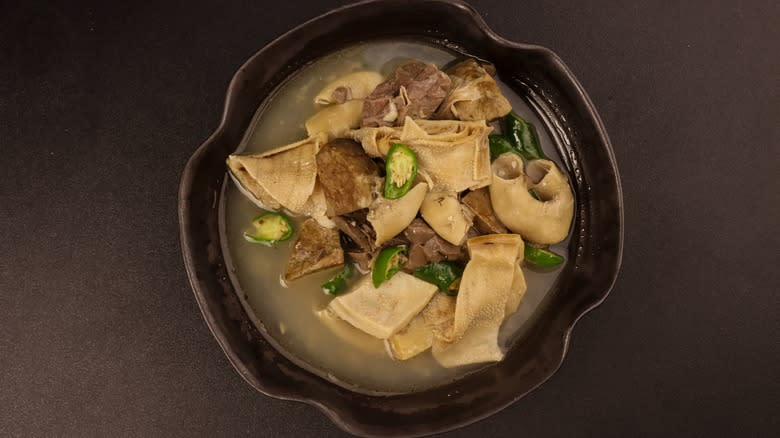
Sometimes we come across a food or ingredient that challenges our taste buds and pushes us out of our comfort zones. For some, beef bile is one such befuddling food. But before you yuck someone else's — or an entire culture's — yum, consider that there may be more to a food or ingredient than your palate's biases or your culinary blindspots.
Americans love beef, to the point where they consume more than 24 billion pounds of beef products yearly. Not everyone makes use of the entire cow, though. To that end, beef bile is an overlooked resource that is used in quite a few iconic Asian dishes. Plus, it might be a source of digestive benefit for some diners.
To many, beef bile may be the ultimate don't-knock-it-until-you-try-it ingredient, but what is it, exactly? We've dived deep into all things bovine bile so that you can feel confident in your decision to try this delicacy.
Read more: 16 Little-Known Facts About Salt
What Is Beef Bile?
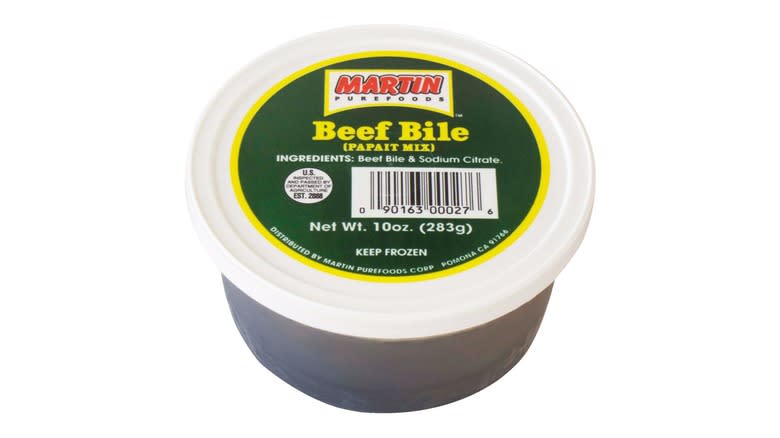
When we're talking about beef bile as an ingredient, it's probably what you already suspect it is. Bile is a foul-smelling fluid that aids in digestion. In humans, it is the substance you typically throw up when your stomach has already been emptied of other contents. That doesn't sound like your typical savory food ingredient, does it? When extracted from cattle, however, it can serve as a potent but beneficial addition to a diverse array of Asian dishes ranging from soups and broths to larb, a kind of meat salad that's often served in Laos and Thailand.
The purpose of bile in human bodies is to help break down fat for smooth digestion. Bile serves the same purpose in bovines, but when added to food (like other beef products), the unexpected ingredient adds a kick of pungent, oftentimes intensely bitter flavor and some potential digestion benefits.
How Is Beef Bile Produced And Harvested?
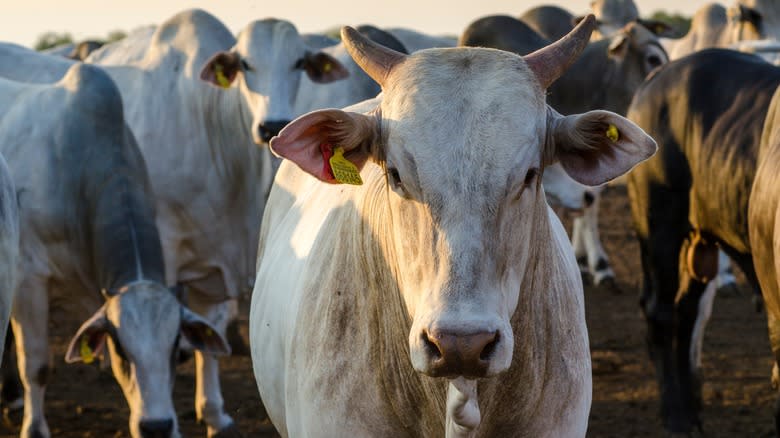
Unlike a lot of the food you find at the grocery store, we know exactly where beef bile comes from. It's a raw ingredient that is made in cattle liver and then secreted into the animal's gallbladder, along the way, it is transformed by the cells that line the bile duct. Because it helps break down fatty foods, the amount of bile created depends on how much fat cattle consume. More fat means more bile.
When the cow is butchered, bile is harvested from its gallbladder. Once the organ is removed, simply making an incision in the gallbladder will release the bile into a collection container. The collected bile can then be packaged and frozen or poured straight into a pan for immediate use. Sometimes the cows are fed herbs before butchering to affect the taste of the bile, which is then dried and crushed into a fine powder before being added to meals.
What Does Beef Bile Taste Like?

To be honest, the flavor of beef bile isn't for the weak of stomach. Beef bile is a strong, bitter-tasting liquid that gives off a pungent odor. Those close enough to get a nose full can imagine just what the ingredient tastes like.
However, beef bile is rarely consumed on its own. Instead, it is used to add flavor to complex dishes. Just a little bit of bile added to a dish brings a markedly bitter taste, even when paired with other strong flavors and herbs. While it isn't a taste that you may love at first, you can grow to enjoy and even desire the unique character of this ingredient.
Bile can be compared to bitters, which are added in small doses to cocktails like an Old Fashioned or a Manhattan. Perhaps this can help the skeptical understand why beef bile can be a sophisticated addition to a dish.
Why Eat Beef Bile?
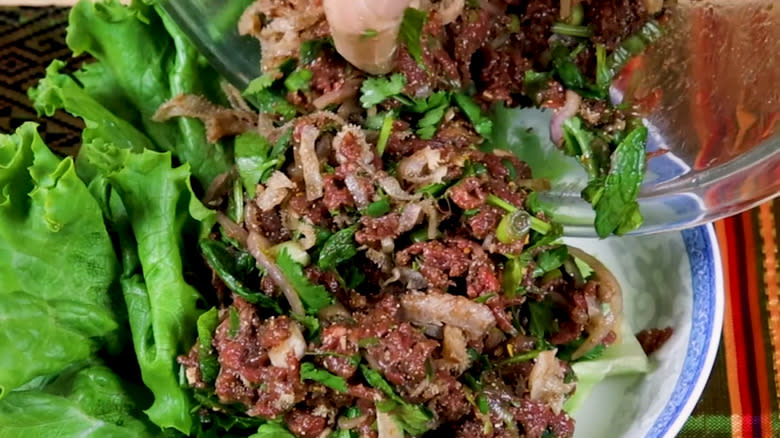
That signature bitterness isn't the only reason to add bile to dishes. First, making good use of bile contributes to the practice of whole-animal utilization. When a cow is butchered, several different cuts of meat are desired. However, many butchers may consider the rest of the cow to be waste. Thanks to the extraction of bile and other parts like gallstones, the gallbladder does not have to be a part of this offal.
The other main reason to consume beef bile is the possible health benefits. As naturally occurring bile breaks down fat in the body, consuming beef bile is thought to aid in digestion by breaking down fat in the food before it enters your body. This reportedly balances a dish and makes it easier to digest, though beef bile alone can be used as a supplement for those with digestive issues (after first consulting with your doctor, of course).
Beef Bile Has Some Possible Health Benefits

The potential health benefits of beef bile go a little deeper than just helping fatty beef or other greasy, rich foods go down more smoothly. The bile acids found in beef bile can also potentially allow your body to absorb a greater amount of nutrients into your body. Not only does pairing food with bile make eating easier on your body, but you may also gain a bit more of what your body needs, especially if those nutrients are fat-soluble (via Clinical and Experimental Gastroenterology).
Beef bile, despite being made up of mostly water, also contains several nutrients that could have significant benefits for your body. Immune system-boosting protein immunoglobulin A helps fight off sickness while other vitamins like A, D, and K are also present and may aid in boosting one's immunity and overall health. Meanwhile, it also contains amino acids that can help create important proteins in your body as well.
How Beef Biles Is Used In Dishes
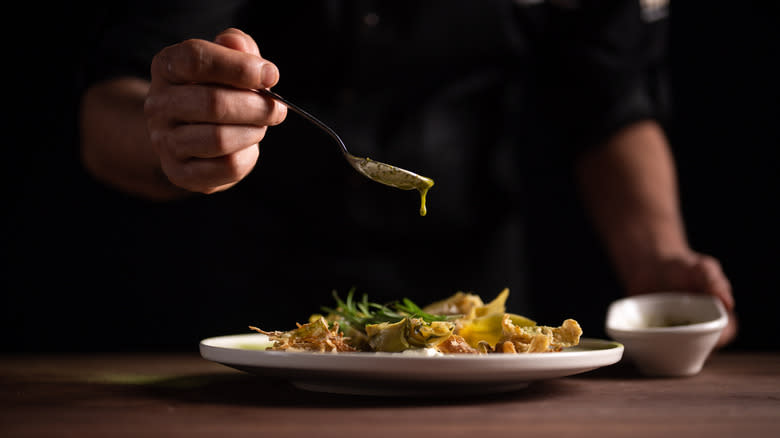
If you're wondering just how you're supposed to cook with beef bile, the answer is very carefully. The smallest amount of the murky yellow liquid is often all that is necessary. The flavor of bile is so strong that using more than a teaspoon could create a plate of food that is overwhelmingly bitter. Instead, you want to use beef bile to complement and even counteract some of the other flavors present in the dish. For instance, bile should not be the broth to your beef stew, but rather added to water or another thin base to create a broth.
Beef bile's bitter taste is great for balancing out the savory flavor of umami, which is found in a lot of Asian cuisines, from seafood-based dishes to miso, mushroom-based meals, and beef. Green tea also is high with the flavor, so pairing a hot cup with a beef bile based dish is a great idea.
Beef Bile Has Been Consumed For Centuries
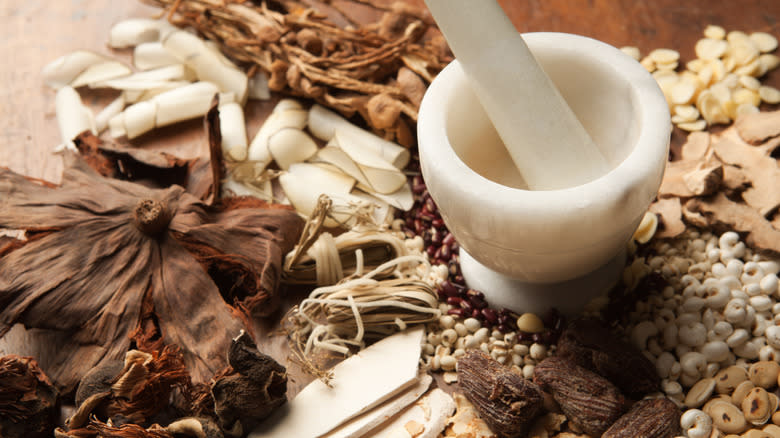
While it may (or may not) be new to you, the reality is that beef bile has been used as medicine for centuries. It, along with bile from many other animals, was a popular remedy in ancient China, dating back to around 1046 B.C.E. Traditional Chinese medicine practitioners would (and sometimes still do) prescribe bile from a wide variety of animals (including oxen and cattle) to their patients. It was most often deployed as a treatment for liver problems, as well as for the heart. As those who practiced medicine would also prescribe diet changes as part of a patient's treatment, it is not far-fetched to think that bile came to be seen not only as medicine, but a culinary ingredient.
The use of beef bile has not been limited to the continent of Asia, though. In North America, indigenous people were known to utilize the entire animal and often had few qualms with eating organs. When they would kill a buffalo, tribes of the Great Plains sometimes used the bile as a kind of condiment on top of the meat. Though it is not clear if they used bile medicinally, they did use the liver, where bile is created, to treat the sick.
Where Beef Bile Is Popular
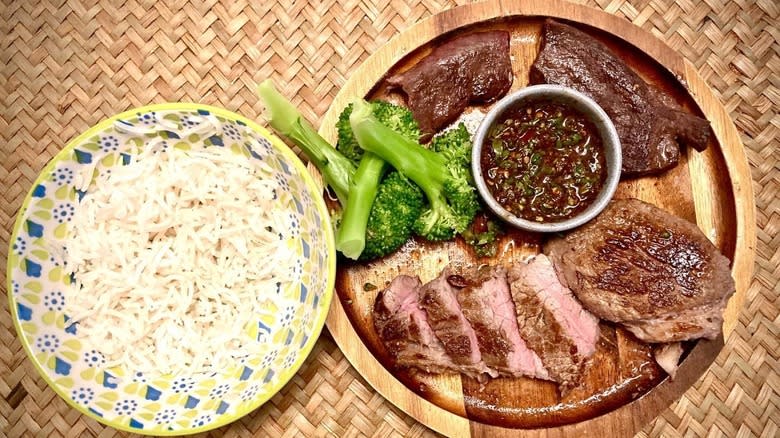
Considering the history of beef bile seems to start in China, it's not surprising that the bitter ingredient remains popular in East and Southeast Asia. Diners in the Philippines, Laos, and Thailand are the most prevalent users of beef bile and are the source of many cultural dishes that feature the ingredient. Of course, just like everywhere else in the world, people have differing tastes, so not everyone in these regions is in love with the bitter ingredient.
Cultures that prioritize the utilization of the entire animal are also more likely to consume beef bile. Though bile is mysteriously missing from a lot of culture's nose-to-tail cooking recipes, like Scotland's haggis and Europe's black pudding, North American Plains tribes made use of bile from buffalo kills. Natives would use bile to cover raw organs for a quick meal but also use the liquid atop cooked meat, which some continue to do today.
What Dishes Use Beef Bile As An Ingredient?
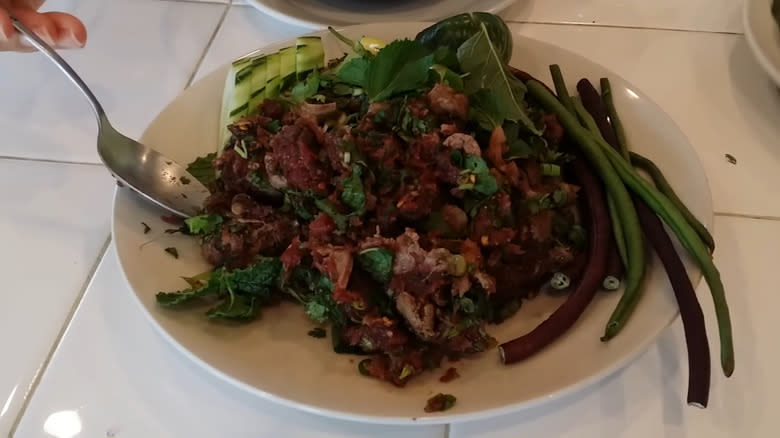
Beef bile appears in many dishes and is most popular in Southeast Asian cuisine, even if it's used sparingly. In southern China, a bitter soup known as kusa utilizes bile as its main component. Larb, also known as Laab, is a Lao and Thai dish that is made with chopped beef and which employs bile for a bitter taste. Thailand also makes a version of beef tartare with a bile sauce. Meanwhile, a beef bile sauce called Lao Jeow Bee is popular in Laos.
One of the most popular uses of beef bile is in a traditional Filipino dish called beef pinapaitan. The name of the dish literally translates to "make bitter," which of course comes from the very distinct taste of the bile used in the cooking process. The dish is an especially good example of nose-to-tail cooking, as it not only contains bile but also other offal organs.
Beef Bile Can Be Used Outside Of Food
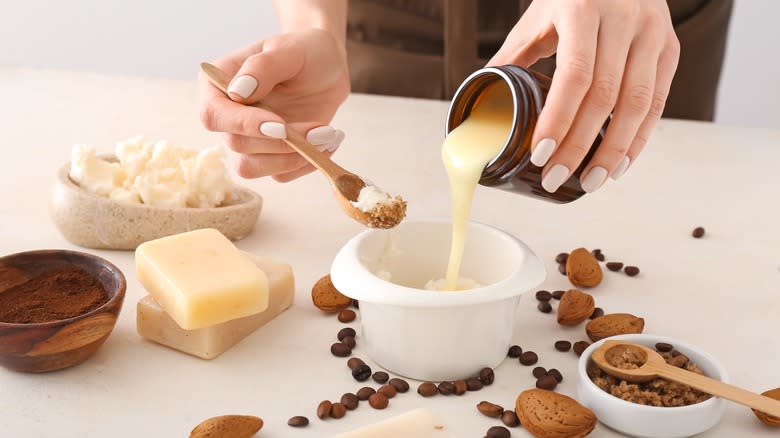
Though beef bile is a relatively well-known ingredient in some cultures, the most popular way to consume the substance is probably in pill form. People who have digestion issues may opt to take the supplement, and those who have had their gallbladder removed have reported success taking the powdered pills, though it's always a smart move to check with your doctor before starting any sort of supplement. Ox bile pills can also be used to round out a pet's diet (though always check with your animal's vet before supplementing their diet).
Beef bile has also been transformed into gall soap, a cleaner made from bile, as well as natural ingredients like grass, fruits, vegetables, and grease. Gall soap is used to remove tough stains made by ink, blood, and grease.
Beef bile can also be an ingredient used to make certain cosmetics, though it may be hard to find in some U.S.-based stores. Shampoo and conditioner can contain bile, likely meant to break up grease; however, this may actually be made with pig bile or even a controversial ingredient known as bear bile (more on that later).
Where To Buy Beef Bile

Besides butchering your own cow, there are a few ways in which you can obtain beef bile. First, you can contact a local butcher. Most grocery store butchers don't carry bile unless their community buys it, but butchers are often in contact with farmers who might be able to supply beef bile.
Making a special trip to your local Asian grocery store may yield some beef bile as well. Some producers sell beef bile in frozen form, meaning you can store it for a longer time while using only what you need. You may also be able to order beef bile online and may even be able to find the powdered version of beef bile if you dig deep enough. Buying online can be tough, though, as international sales of beef bile can be limited and most local markets simply aren't going to ship it just anywhere.
Alternatives To Beef Bile
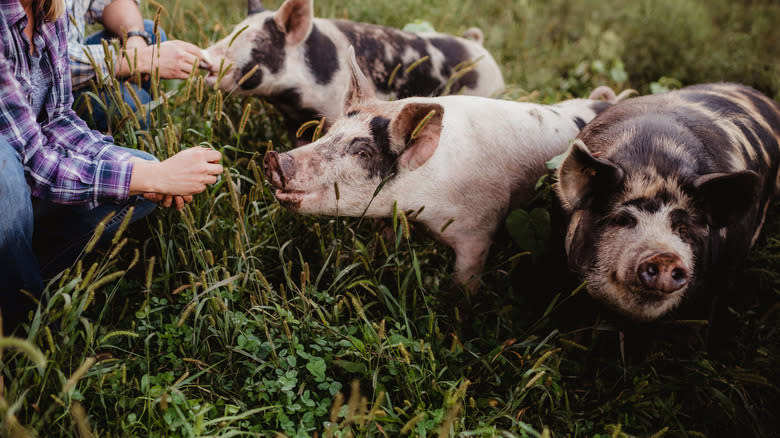
There is not much that can replicate the taste and effect of beef bile ... except, perhaps, for bile from other animals. Often, pig bile is used to a similar effect, though it is less popular and thus will likely be harder to find compared to beef bile.
For a vegetarian-friendly alternative, leafy greens are a great option to get that bitter edge in a dish. They are also oftentimes great for digestion. However, the texture will not stack up to beef bile, as it can be difficult to use a green to make a hearty broth. They are also a lot less potent. Molasses can potentially be used for digestive problems and could be added in small amounts to dishes in bile's stead, though of course it brings a unique flavor and a sweetness that makes it taste markedly different from far more bitter animal bile.
Beef Bile Vs Bear Bile
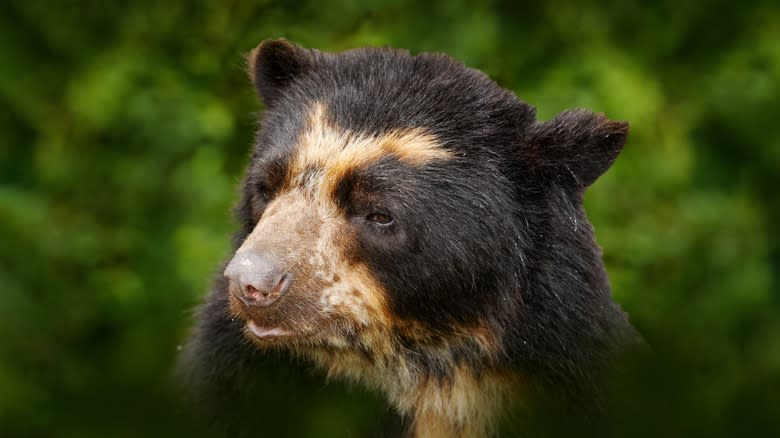
Cattle are not the only animals whose bile is harvested for consumption; in fact, a variety of animal bile has been used in traditional Chinese medicine for centuries. Yet one type is especially controversial. Bear bile is at the center of a relatively large industry in some Asian countries. Unlike beef bile, though, the process of extracting bear bile can be a horror show.
Beef bile is taken from the gallbladders of cattle that have already been slaughtered for their meat. Bear bile, on the other hand, is taken from bears who have been captured and kept alive to extract the delicacy. In these operations, Asiatic black bears are locked in tiny cages and prodded with four-inch needles to extract the bile. Other operations may use semi-permanent tubes to extract bile (though these installation sites can become infected) or use a tubeless drainage technique. The bears can be held captive for their entire lifespans, which last up to 39 years if they are held captive. While this practice is banned in many countries, it is still legal in China. Yet bear bile is, for many, too morally complicated to consider using.
Read the original article on Mashed

